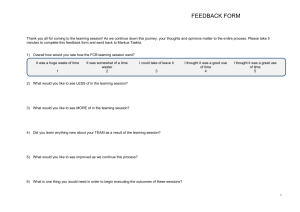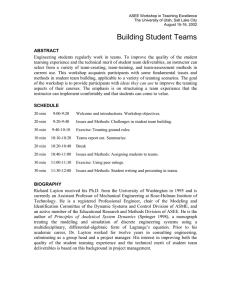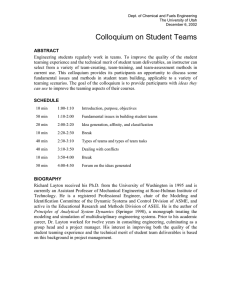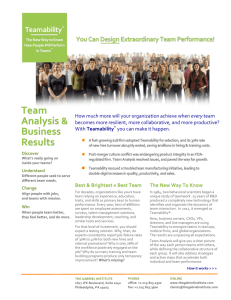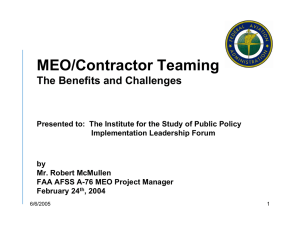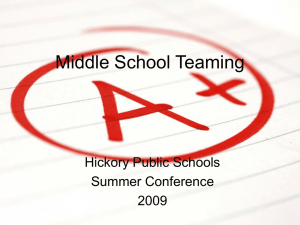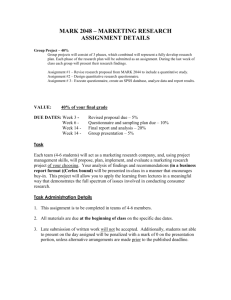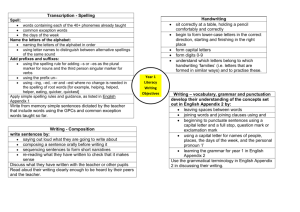Laboratory 1 Report Writing And Teaming Exercises
advertisement
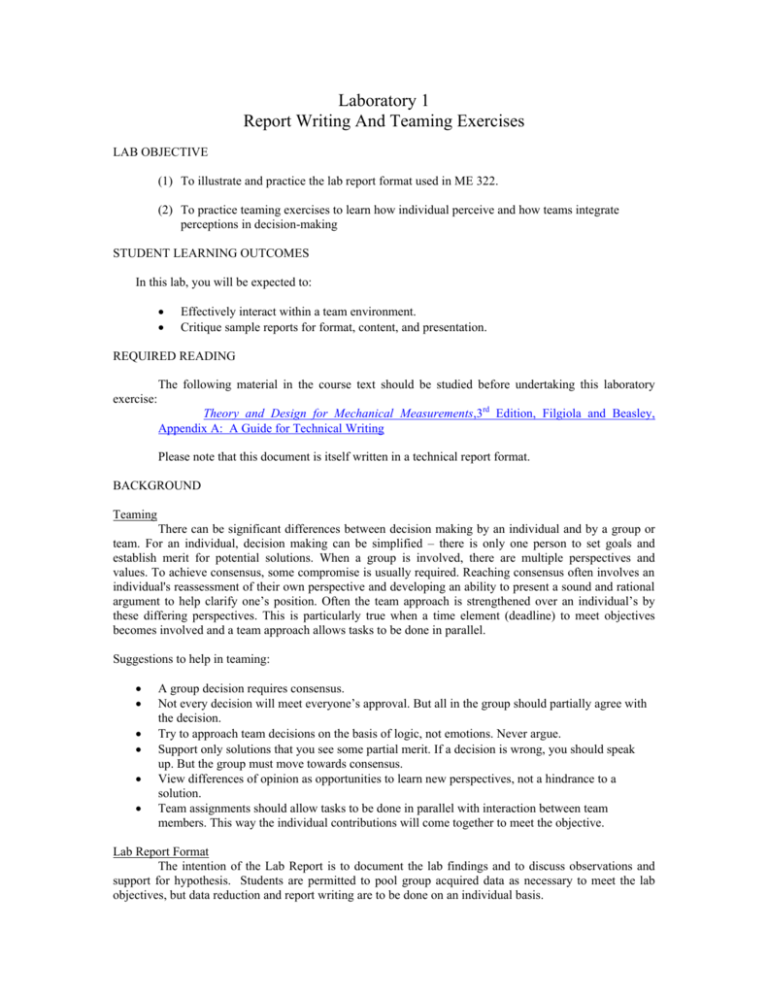
Laboratory 1 Report Writing And Teaming Exercises LAB OBJECTIVE (1) To illustrate and practice the lab report format used in ME 322. (2) To practice teaming exercises to learn how individual perceive and how teams integrate perceptions in decision-making STUDENT LEARNING OUTCOMES In this lab, you will be expected to: • • Effectively interact within a team environment. Critique sample reports for format, content, and presentation. REQUIRED READING The following material in the course text should be studied before undertaking this laboratory exercise: Theory and Design for Mechanical Measurements,3rd Edition, Filgiola and Beasley, Appendix A: A Guide for Technical Writing Please note that this document is itself written in a technical report format. BACKGROUND Teaming There can be significant differences between decision making by an individual and by a group or team. For an individual, decision making can be simplified – there is only one person to set goals and establish merit for potential solutions. When a group is involved, there are multiple perspectives and values. To achieve consensus, some compromise is usually required. Reaching consensus often involves an individual's reassessment of their own perspective and developing an ability to present a sound and rational argument to help clarify one’s position. Often the team approach is strengthened over an individual’s by these differing perspectives. This is particularly true when a time element (deadline) to meet objectives becomes involved and a team approach allows tasks to be done in parallel. Suggestions to help in teaming: • • • • • • A group decision requires consensus. Not every decision will meet everyone’s approval. But all in the group should partially agree with the decision. Try to approach team decisions on the basis of logic, not emotions. Never argue. Support only solutions that you see some partial merit. If a decision is wrong, you should speak up. But the group must move towards consensus. View differences of opinion as opportunities to learn new perspectives, not a hindrance to a solution. Team assignments should allow tasks to be done in parallel with interaction between team members. This way the individual contributions will come together to meet the objective. Lab Report Format The intention of the Lab Report is to document the lab findings and to discuss observations and support for hypothesis. Students are permitted to pool group acquired data as necessary to meet the lab objectives, but data reduction and report writing are to be done on an individual basis. For ME 322, Lab Reports should be limited to 400-600 words unless otherwise instructed. Emphasis should be placed on the Test Plan and the Results. Appropriate sections include: Introduction (for ME 322 limit this to the test objective, adding only short additional comments as necessary), Approach (Analysis and Experimental Program: describe your test plan, set-up, and any supporting analysis or decision strategy), Results (focus on results by discussing your data, data analysis and its interpretation), Conclusion (for ME 322 a short statement), Include Figures as appropriate and cite them in your text. Never place results or figures in an appendix. Add References, if needed. Lastly, include an Appendix to contain your raw data (The References and Appendix does not count towards the maximum word count). As a hint, a successful report writer (e.g. one who earns a good grade!) should strive to explain data trends and the significance of these trends in light of the expected outcome. The grade assigned to the reports will reflect the writer’s ability to perform the following: • explain the rational in the test plan formulation • execute the test (including preparation for the lab) • explain the results • document the relation between the results and the conclusions drawn • provide all explanations in a clear and concise manner • provide a document that is free of spelling and grammatical errors • provide a clean, neat report. The report is where the engineer demonstrates that the time spent in preparation, in lab, and in data reduction resulted in an understanding of the material. Please remember: If it is not documented in the report, credit cannot be given for it! You will graded as follows: Technical Content (50%) Presentation Quality (25%) Writing Style (25%) LABORATORY REPORT FORMAT AND WRITING STYLE The writing style, format, and content of a laboratory report are described in Appendix A of your text (cited above). Some key points to emphasize in this exercise and for your reports are: • • • All of the content outlined in the report format should be present in the report. Writing should be in the third person, with only rare exceptions Tables and figures should conform to an accepted standard of format and clarity in presenting data. EXERCISES At the start of class, your TA will separate you into groups or “teams” that you will use for most of the semester. TEAMING EXERCISE Your TA will distribute an exercise. The exercise will describe a scenario and request your decision making input. For the exercise, you will fill out the decision input questionnaire individually as requested (5 – 7 minutes). You will then proceed to meet with your team and develop a team response to the questionnaire (15 minutes). You will then meet as a class to review an “expert’s” response to the questionnaire. This type of exercise is fun but quite a powerful teaming training tool. 2 REPORT WRITING EXERCISE Your TA will distribute one or two examples of laboratory reports. You are to read and evaluate each report individually and complete the worksheet. Then you will meet as a team to discuss the report and complete the worksheet. As a class, you will then discuss the positive and negative aspects of each report. To help you out: For each example you should find errors from the following list. You should give clear justification to support your choices. Some Possible Errors • Tables • Grammar & spelling § Titles • Too much information § Units • Too little information § Placement • Format • Writing Style • Nomenclature § Wordy • Figures (including) § Choppy § Titles • Missing material/sections § Axes • Confusing § Units § Legends § Reference § Placement 3
